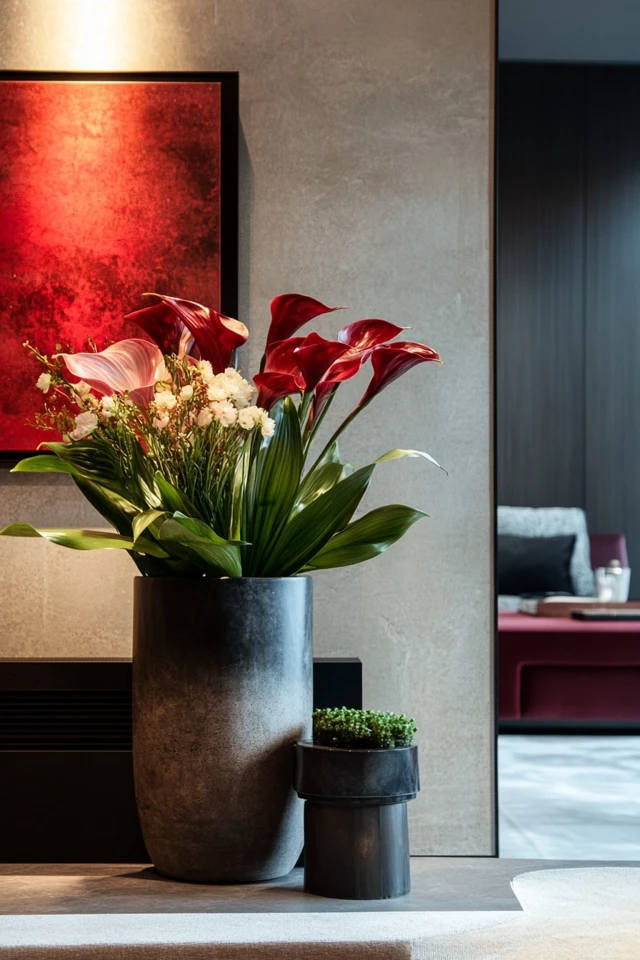Before Reading this Article, Hire Us As Your Designer or Take a Look at My Top 3 Amazon Picks!
If you are looking to blend Amazon's furniture finds with a personalized touch for your space, check out my portfolio, and hire us! You'll get 3 Idea boards, 2 Concept Boards, 2 Realistic Renderings, a Floor Plan, and a Shopping List! Everything's online, plus a 25% discount on your first online interior design project with my Havenly Promo code 4c7441bcfb. With over 2,000 designs since 2017 and top US brand partnerships, your project is in expert hands. US only. Ready to start?
Introduction
Lighting is often the unsung hero of interior design. While furniture and decor may take center stage, the right lighting can completely transform a space. It can highlight architectural details, set the mood, and create drama that takes your design to the next level. Whether it’s the warm glow of a table lamp, the striking shadows cast by a chandelier, or the bold statement of LED strips under shelves, lighting is the tool that gives your space dimension and soul.
I’ll never forget the first time I used lighting to create a dramatic effect in my own home. I had an otherwise plain dining room, but by installing a sculptural pendant light and adding dimmable wall sconces, the room instantly felt luxurious and inviting. The lighting emphasized the room’s textures and created a cozy yet sophisticated atmosphere. That moment made me realize that lighting isn’t just functional—it’s the magic wand that can transform any space into something extraordinary.
This guide will help you harness the power of lighting to add drama and intrigue to your home. Whether you’re working with a small apartment or a grand living room, the right lighting choices can elevate your space in ways you never imagined.
The Perfect Design for You
Relying on lighting for a more dramatic effect is ideal for anyone looking to create depth, mood, and personality in their home. Lighting design works for all styles, from minimalist to maximalist, and can transform spaces with even the simplest furnishings into dynamic, layered environments.
Imagine a bedroom where soft, ambient lighting from a backlit headboard creates a calming, ethereal glow. Or picture a modern living room with a bold, oversized floor lamp casting dramatic shadows on the wall. Lighting brings life to a space, turning it from static to stunning.
Whether you’re highlighting architectural details, drawing attention to art, or simply setting the mood, lighting offers endless opportunities to create a sense of drama and elegance in any room.
Picture Gallery
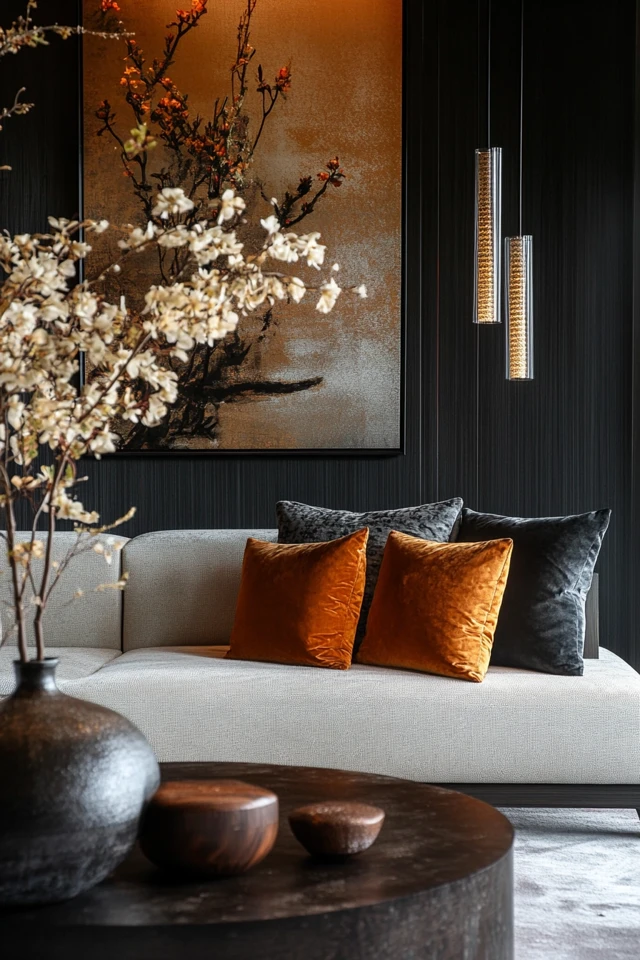
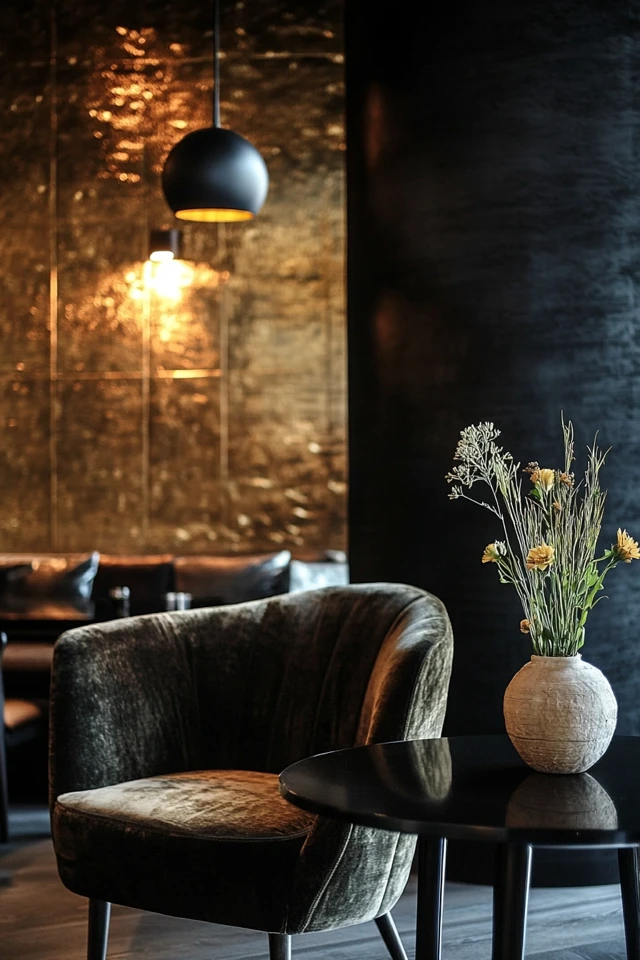

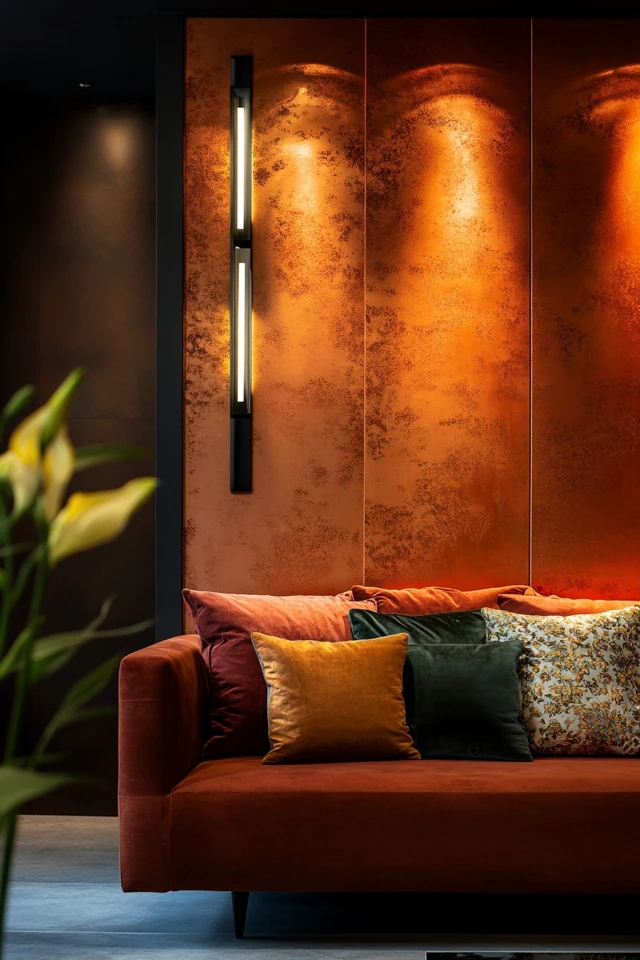
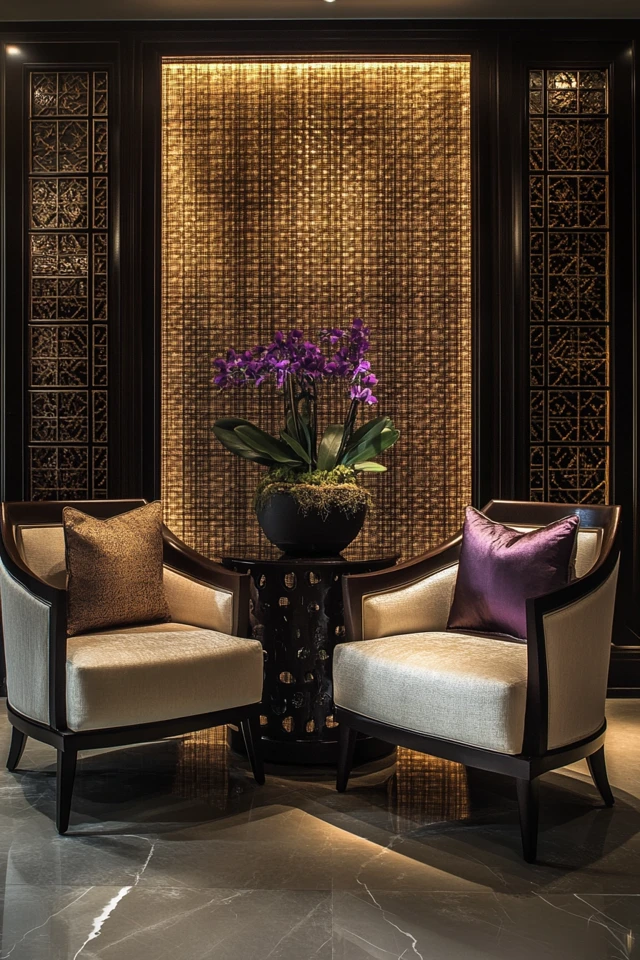
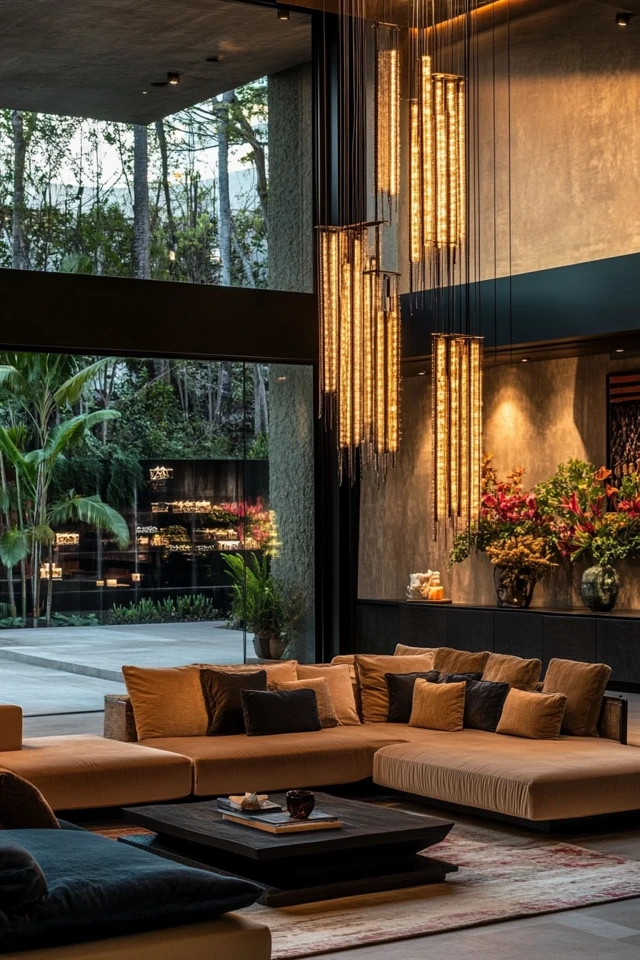
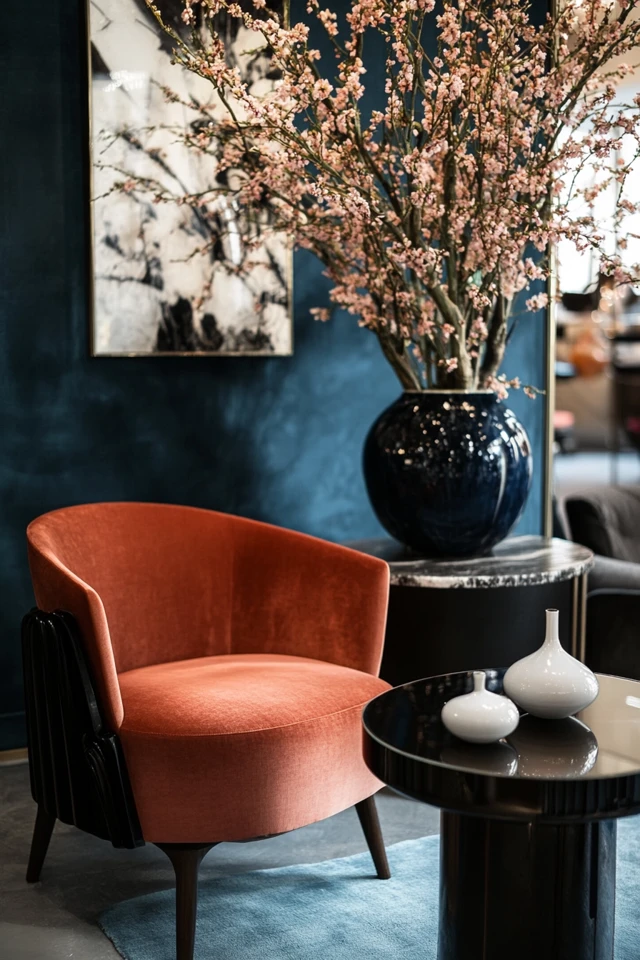
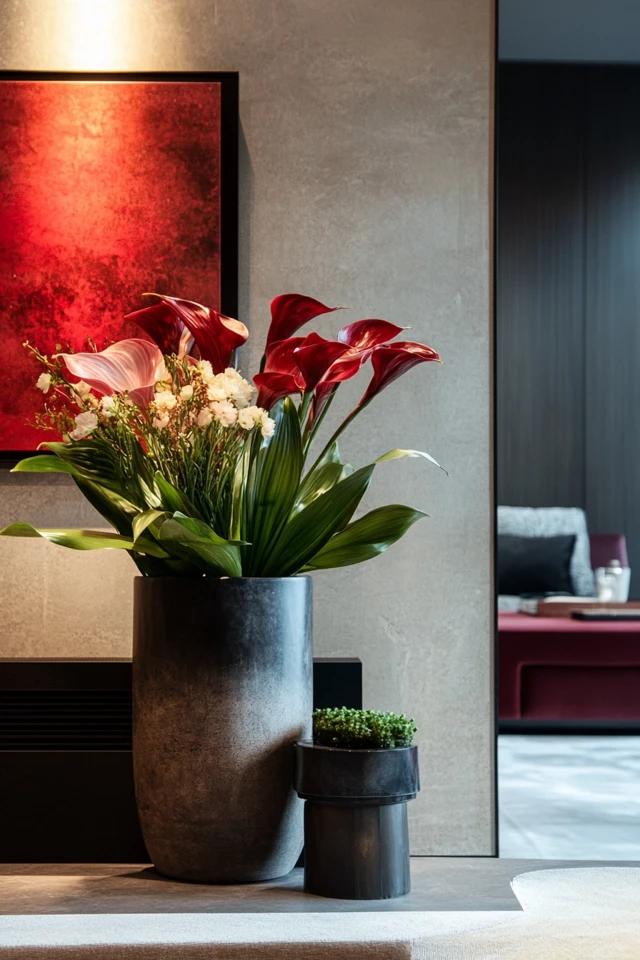
Why These Key Elements Work So Well Together
Lighting creates a dramatic effect by combining function with form. It enhances design elements, manipulates the perception of space, and evokes emotion. Here’s why lighting works so effectively:
- Layering of Light: A mix of ambient, task, and accent lighting creates depth and dimension, allowing you to highlight specific areas while keeping the overall space well-lit.
- Shadows and Contrast: Lighting adds drama by casting shadows and creating contrast, which draws the eye and gives a room dynamic energy.
- Mood Creation: The warmth, intensity, and placement of lighting can completely change the mood of a space, making it feel cozy, mysterious, or vibrant.
- Focal Points: Lighting naturally draws attention to specific elements, such as art, architectural details, or furniture.
Evidence-based design supports the psychological impact of lighting on mood and perception. Bright, warm lighting fosters comfort and positivity, while softer, directional lighting adds intrigue and creates an intimate atmosphere.
How to Rely on Lighting for a More Dramatic Effect: Step-by-Step
1. Assess Your Space
- Identify areas of the room you want to highlight or enhance. Look for architectural features, artwork, or decor that could benefit from dramatic lighting.
2. Layer Your Lighting
- Use a combination of lighting types to add depth and flexibility:
- Ambient Lighting: General lighting, such as ceiling fixtures or recessed lights, provides overall illumination.
- Task Lighting: Focused lighting, such as desk lamps or under-cabinet lights, highlights functional areas.
- Accent Lighting: Decorative lighting, such as wall sconces, LED strips, or spotlights, draws attention to specific features.
3. Incorporate Statement Fixtures
- Choose bold lighting fixtures that double as decor:
- A dramatic chandelier in a dining room.
- A sculptural floor lamp in a living room.
- Pendant lights with unique shapes or finishes.
4. Experiment with Dimmers
- Install dimmer switches to control light intensity. This allows you to shift between bright, energizing light and soft, intimate moods.
5. Play with Shadows
- Use lighting to cast intriguing shadows and patterns:
- Position a floor lamp behind a plant for leafy shadows on the wall.
- Hang a pendant light with an intricate design that casts patterns on the ceiling.
6. Highlight Key Features
- Use lighting to draw attention to focal points:
- Place LED strip lights under shelves or cabinets to showcase decor.
- Use picture lights to illuminate artwork.
- Install uplights at the base of architectural features, like columns or arches.
7. Incorporate Color
- Add drama with colored lighting:
- Use warm tones for a cozy atmosphere or cool tones for a modern vibe.
- Experiment with color-changing LED lights to create playful, dynamic effects.
8. Use Directional Lighting
- Focus lighting on specific areas or items for dramatic emphasis:
- Aim spotlights at textured walls or unique furniture pieces.
- Use track lighting to highlight a gallery wall.
9. Enhance with Natural Light
- Combine artificial and natural light for a dynamic effect:
- Use sheer curtains to diffuse daylight and soften shadows.
- Position mirrors to reflect light and make the room feel larger.
10. Edit and Refine
- Test your lighting setup and adjust placement, intensity, or angles to achieve the desired effect. Experiment with layering until the room feels cohesive and dramatic.
FAQ
1. What is dramatic lighting?
Dramatic lighting emphasizes depth, contrast, and mood through thoughtful placement, intensity, and layering of light sources.
2. How do I choose the right lighting for my space?
Consider the room’s purpose and design. Use ambient lighting for overall brightness, task lighting for functionality, and accent lighting for drama and visual interest.
3. Can dramatic lighting work in small spaces?
Absolutely! Use directional lighting to create focal points, mirrors to reflect light, and dimmers to control intensity in small rooms.
4. What types of bulbs create the most drama?
Warm LED bulbs are versatile and energy-efficient, while Edison bulbs add a vintage, atmospheric touch. Color-changing bulbs are great for creating unique effects.
5. How do I balance functionality with dramatic lighting?
Layer lighting to ensure practicality while incorporating dramatic accents. For example, pair functional recessed lights with bold pendants or wall sconces.
Variations
- Minimalist Drama: Use sleek, monochromatic fixtures, such as recessed lights or geometric pendants, to create subtle yet impactful drama.
- Vintage Glamour: Incorporate chandeliers, Edison bulbs, and gold-finished sconces for a classic, opulent look.
- Industrial Edge: Use exposed bulbs, metallic fixtures, and track lighting to create a bold, modern aesthetic.
- Playful Color: Experiment with color-changing LEDs or neon signs to add a whimsical, contemporary vibe.
- Natural Elegance: Use lantern-style fixtures or lights with organic shapes to evoke warmth and harmony with nature.
How to Showcase It
- Living Rooms: Use floor lamps, statement pendants, and dimmable sconces to create a cozy yet dramatic atmosphere.
- Dining Rooms: Install a chandelier or pendant light above the dining table to serve as a focal point.
- Bedrooms: Add drama with backlit headboards, string lights, or directional sconces for a soft, intimate glow.
- Bathrooms: Use mirror lighting, recessed spotlights, or under-cabinet LEDs to highlight textures like tiles or stone.
- Outdoor Spaces: Incorporate string lights, lanterns, or uplighting to create an enchanting ambiance for patios or gardens.
Occasions to Feature It
- Romantic Evenings: Use soft, dimmed lighting to create a warm, intimate atmosphere for special moments.
- Dinner Parties: Highlight the dining area with statement lighting that enhances the mood and makes guests feel welcome.
- Everyday Elegance: Incorporate dramatic lighting into your daily routine to elevate the look and feel of your home.
- Seasonal Celebrations: Add twinkle lights, LED strips, or colorful bulbs for festive touches during holidays or special events.
- Creative Displays: Use lighting to draw attention to art, collections, or unique decor in your space.
Conclusion
Lighting has the power to transform your space, creating drama, depth, and mood that elevate your design. By layering different types of lighting, experimenting with shadows and focal points, and incorporating statement fixtures, you can craft a room that feels both functional and breathtaking.
Whether you’re aiming for subtle sophistication or bold theatricality, lighting is the tool that brings your vision to life. It’s not just about illuminating a space—it’s about telling a story, evoking emotion, and turning your home into a work of art.
So step into the world of dramatic lighting, play with contrast and color, and let your space shine in ways you never imagined. With these tips, you’ll master the art of lighting and create a home that’s as captivating as it is practical.

